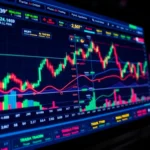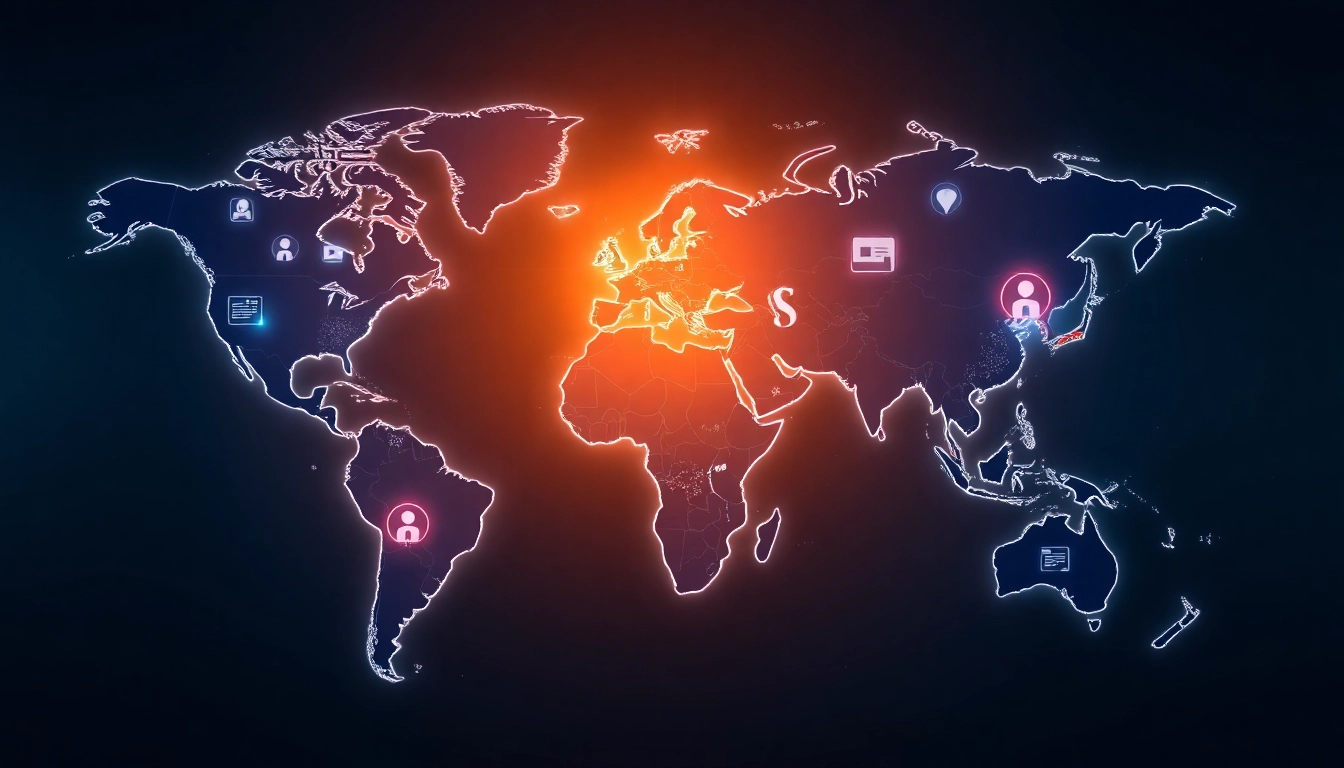Understanding the Significance of World News in Today’s Journalism
In an increasingly interconnected world, the value of World News cannot be overstated. It serves as the pulse of global events, shaping public opinion, influencing policy decisions, and fostering international awareness. From geopolitical developments to economic shifts and natural disasters, world news provides a comprehensive perspective on the interconnectedness of nations. It empowers citizens to understand the complexities of international affairs, encouraging informed discourse and global citizenship. Moreover, in an era dominated by digital media, the rapid dissemination of news ensures that societies stay updated in real-time, bridging geographical distances and cultural divides.
1.1 Role of World News in Shaping Public Opinion
At the core of journalism, world news functions as a vital instrument for molding public perceptions. Well-reported international stories create awareness about pressing issues, such as climate change, conflicts, or humanitarian crises, prompting societal responses and policy reforms. For example, extensive coverage of environmental disasters like floods or wildfires can galvanize public support for sustainable initiatives. Conversely, how stories are framed—whether highlighting economic opportunities or diplomatic tensions—can influence public sentiment towards governments and international alliances. Reliable and balanced reporting is essential to prevent misinformation and foster a well-informed citizenry capable of engaging in democratic processes.
1.2 Key Challenges in Reporting International Headlines
Despite its importance, reporting world news faces unique hurdles. Challenges include gathering accurate information amidst restricted access zones, dealing with censorship, and navigating regional biases that skew narratives. Journalists often operate in volatile environments, risking safety to deliver firsthand accounts. Furthermore, geopolitical interests can influence coverage, leading to potential bias or suppression of unfavorable news. The proliferation of misinformation and fake news exacerbates these issues, making verification and fact-checking critical yet complex. Overcoming these barriers requires robust journalistic standards, collaboration with international agencies, and investment in investigative resources to ensure credible and comprehensive coverage.
1.3 Impact of Digital Media on Global News Dissemination
The advent of digital media has revolutionized how global news is consumed and disseminated. Social media platforms like Twitter, Facebook, and Instagram enable instant sharing of breaking news, often bypassing traditional gatekeepers. News outlets now utilize multimedia formats—videos, podcasts, live streams—making stories more engaging and accessible. Digital tools also facilitate real-time fact-checking and community engagement. However, the rapid spread raises concerns over the accuracy and authenticity of reports. The challenge lies in balancing speed with credibility. As technology evolves, innovations such as AI-driven news curation and verification are emerging to enhance reliability and user experience.
2. Major Global Events and Their Coverage in World News
2.1 Recent Political Developments Around the Globe
Recent months have witnessed significant political shifts worldwide, such as the transition of power and diplomatic realignments. For instance, the election of new leaders in various countries often triggers extensive international coverage, analyzing policy changes and geopolitical implications. Notably, the succession of CP Radhakrishnan as India’s Vice President was covered alongside broader regional implications of political stability. In Europe, discussions surrounding the EU’s response to various crises continue to dominate headlines, reflecting on the importance of diplomacy and international cooperation in maintaining peace and stability.
2.2 Economic Shifts and Market Reactions
Global markets are highly sensitive to international economic news. Developments like major corporate mergers, trade deals, or economic reforms can cause ripple effects across markets worldwide. For example, the recent surge in Kotak Bank shares following a ₹6,256 crore block deal by Sumitomo Mitsui highlights how investor confidence reacts swiftly to strategic financial moves. Economic indicators such as inflation rates, employment data, and currency fluctuations are also prominently covered, providing insights into a country’s financial health. Media analysis helps investors and policymakers understand the broader economic landscape and make informed decisions.
2.3 Environmental and Natural Disaster Reports
Environmental issues increasingly dominate global news cycles, with reports covering climate change impacts, natural calamities, and conservation efforts. For instance, recent flash floods in Indonesia, resulting in casualties and missing persons, have drawn attention to climate resilience and disaster preparedness. Media narratives also play a role in urging governments and communities to adopt sustainable practices, emphasizing the interconnectedness of environmental health and human well-being. The coverage often combines on-ground reports, satellite imagery, and expert analysis to present a comprehensive picture of ongoing crises.
3. Best Practices for Consuming Reliable World News
3.1 Identifying Credible Sources and Avoiding Misinformation
In the digital age, discerning credible information from misinformation is crucial. Trusted sources like BBC’s world news, CNN, and Reuters maintain journalistic integrity through rigorous verification processes. Users should look for transparency regarding sources, publishing standards, and authorship. Cross-referencing information across reputable outlets helps verify facts. Avoiding sensationalist headlines and checking for corroborative evidence ensures a balanced understanding. Employing fact-checking tools and staying aware of echo chambers can mitigate the influence of biased or false narratives.
3.2 Analyzing News Biases and Perspectives
Recognizing biases is essential for nuanced understanding. All media outlets have inherent perspectives influenced by cultural, political, or economic factors. Analytical skills help identify framing devices, choice of language, and omitted contexts. For instance, coverage of international conflicts often varies significantly depending on regional alliances and national interests. Critical consumption involves exploring multiple viewpoints, including international opinions, to develop a comprehensive perspective on major global issues.
3.3 Utilizing Technology for Accurate World News Updates
Leveraging technological tools enhances news consumption. Subscription-based apps offer personalized, curated content, minimizing misinformation. AI-powered news aggregators filter relevant and credible stories based on user preferences. Video conferencing with correspondents and live feeds enhance real-time engagement. Social media monitoring tools enable tracking trending topics and verifying breaking stories. Embracing these innovations allows consumers to stay well-informed efficiently and responsibly.
4. How Business and Politics Intersect in Global Headlines
4.1 International Economic Policies and Trade Agreements
Economic policies and trade agreements significantly influence international relations and market dynamics. Recent initiatives like the push for self-reliance (Swadeshi) by leaders like PM Modi, along with new infrastructure projects worth Rs 7,616 crore in Bihar, exemplify how domestic policies impact regional development. Globally, negotiations such as tariffs on India and China or EU trade negotiations create headlines influencing global supply chains and investment flows. Media coverage often emphasizes the strategic motivations behind these deals, illustrating the inseparable link between politics and economics.
4.2 Diplomatic Relations and Global Alliances
Diplomatic ties shape security, trade, and international cooperation. Recent headlines highlight NATO’s response to conflicts like Russian drone attacks over Poland or the shifting alliances in Middle Eastern diplomacy. These stories reveal underlying strategic interests, alliances, and opposition. Effective reporting provides context on international treaties, sanctions, and diplomatic visits, aiding public understanding of complex geopolitical shifts and their implications for global stability.
4.3 The Role of International Organizations in Shaping Headlines
Global institutions like the United Nations, World Bank, and WHO play pivotal roles in crisis management and policy formulation. Coverage includes their responses to natural disasters, health emergencies like pandemics, and development programs. For instance, international efforts in climate change mitigation and pandemic response are often highlighted, showcasing their influence on national strategies and global cooperation.
5. Future Trends and Innovations in World News Reporting
5.1 The Rise of AI and Data-Driven Journalism
Artificial intelligence is transforming newsrooms, enabling rapid data analysis, personalized content, and even automated reporting. AI algorithms can sift through vast datasets to uncover patterns, breaking down complex issues into digestible stories. This trend enhances speed and accuracy while reducing human bias. For example, AI reporting on financial markets or election results provides real-time updates, empowering viewers with instant insights.
5.2 Interactive and Immersive News Technologies
Emerging technologies like virtual reality (VR), augmented reality (AR), and 360-degree videos are creating immersive news experiences. These innovations allow audiences to virtually witness natural disasters, conflict zones, or cultural events in a more visceral manner, fostering empathy and understanding. Interactive infographics and live data dashboards further deepen engagement and comprehension.
5.3 Challenges and Opportunities in the Evolving Media Landscape
While technological advancements promise enhanced storytelling, they also pose challenges such as digital literacy gaps, misinformation proliferation, and ethical considerations. The evolving landscape necessitates strict journalistic standards, transparent algorithms, and media literacy education. Opportunities lie in expanding access to quality information, bridging digital divides, and cultivating a more informed global citizenry capable of navigating the complexities of future world news.









